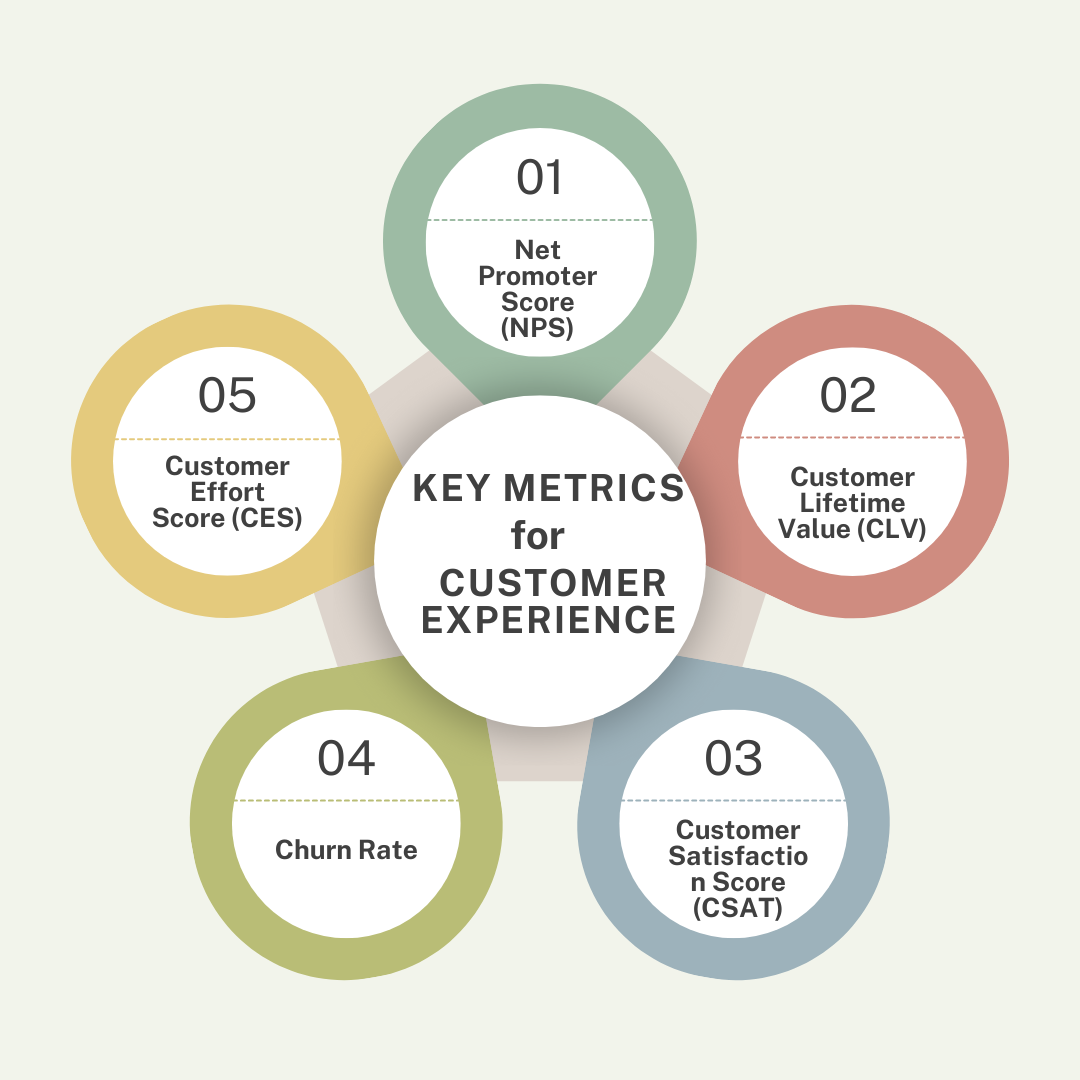Customer experience (CX) stands out as a critical factor in determining a company's competitiveness and success. The digital transformation, accelerated by emerging technologies and changing consumer behaviors, has placed a premium on delivering exceptional customer experiences. At ValueBound, we understand that enhancing the digital customer experience is vital for future success.
This blog post will explore why enhancing the digital customer experience is critical for future success and how businesses can stay ahead of the curve.
How to Improve Customer Experience in 2024?
Enhancing your customer experience is essential, as even small improvements can be the deciding factor between a business thriving or merely surviving. Below are practical strategies to help elevate your customer interactions from good to exceptional.
1. Embrace Personalization
Personalization goes far beyond addressing a customer by their first name. It’s about crafting interactions that make each customer feel truly understood. Use dynamic content that adapts in real-time to each user’s specific behaviors. When done right, personalization at scale turns ordinary interactions into meaningful experiences, making customers feel valued and increasing their likelihood of returning.
2. Customer Journey Mapping
Understanding the customer journey is critical in identifying pain points and opportunities for improvement. Start by mapping out each touchpoint and interaction, paying special attention to transitions between channels, as this is where friction often occurs. For example, if a customer begins a transaction online but switches to a phone call for assistance, they expect a seamless continuation of the process. Addressing these issues smooths the experience and reduces frustration, leading to higher satisfaction and loyalty.
3. Empower Your Employees
Your employees are your brand's front-line ambassadors. Equipping them with the right tools and knowledge is essential for delivering a superior customer experience. Start by providing comprehensive training on your products and services, ensuring that they are well-versed in all areas that customers might inquire about. Regular feedback sessions are also crucial, as they allow staff to share insights from their daily interactions.
4. Implement Technology Wisely
Technology can significantly enhance the customer experience, but it should never replace the human touch. Implement chatbots for routine queries to handle simple tasks and free up your staff for more complex or emotionally charged issues. Use customer relationship management (CRM) systems effectively to maintain detailed customer histories, which can provide invaluable context during interactions. Automation can also streamline repetitive tasks, allowing faster response times.
5. Act on Feedback
Listening to your customers is one of the most effective ways to improve their experience. Make feedback collection a regular practice by implementing short, focused surveys that don’t overwhelm the customer. In addition, monitor social media for unsolicited feedback—what people say when they’re not prompted often reveals valuable insights. However, gathering feedback is just the first step. The real value lies in acting on it. Show your customers that you’re using their input to make meaningful changes.
6. Focus on Emotional Connections
Great customer experiences often come from building emotional connections. Train your staff to recognize and respond to emotional cues, especially when customers are frustrated or upset. Creating moments of delight—small, unexpected gestures that make customers feel special—can also foster deeper emotional connections.
7. Simplify Everything
Streamline your processes, eliminating unnecessary steps that create frustration. Ensure that your interfaces—whether digital or physical—are intuitive and easy to navigate. Finally, use clear, jargon-free communication across all customer touchpoints. Customers value simplicity, and offering straightforward, efficient experiences will set you apart from the competition.
Maximizing a Customer Experience Platform for Success
To be distinct in 2024, strong customer experience platforms are being deployed. Such programs give customers a front-and-center, centralized locale for their interactions to be understood in terms of behaviors and personalized experiences. Some of the most important benefits include:
- Unified Customer View: Pool data across multiple touchpoints into a single, panoramic view of the customer.
- Real-time Analytics: Support data-driven decision making with actionable insights to respond to situations timely.
- Omnichannel Support: Deliver consistent experiences irrespective of the channel opt-in form, social media, or transaction activity inside a store.
- Automated workflows: Allowing processes to be streamlined for more speed and responsiveness.
Personalization at scale: Tamed service tailored to every customer without creating heavy work for your team.
Latest Digital Customer Experience Trends
To stay competitive, businesses must keep pace with the latest digital customer experience trends. Here are some key areas to focus on:
1. AI-Powered Personalization
Artificial Intelligence is revolutionizing how businesses interact with customers. By leveraging AI algorithms, companies can:
- Predict customer needs and preferences
- Offer personalized product recommendations
- Provide proactive customer support
- Optimize pricing and promotions in real-time
2. Voice and Conversational Interfaces
As voice assistants become more prevalent, businesses should consider:
- Developing voice-optimized content
- Creating voice-enabled apps or skills
- Implementing chatbots for 24/7 customer support
- Ensuring natural language processing capabilities
3. Augmented and Virtual Reality Experiences
AR and VR technologies are transforming customer interactions. Consider implementing:
- Virtual product try-ons
- Immersive brand experiences
- AR-powered navigation in physical stores
- Virtual showrooms or property tours
4. Hyper-Personalization
Go beyond basic segmentation to deliver truly personalized experiences:
- Use behavioral data to tailor content and offers
- Implement dynamic pricing based on individual customer value
- Create personalized onboarding experiences
- Offer customized product bundles or subscriptions
5. Seamless Omnichannel Experiences
Customers expect consistency across all touchpoints. Focus on:
- Integrating online and offline experiences
- Enabling cross-device continuity
- Providing channel-agnostic customer service
- Implementing unified loyalty programs
Measuring and Improving Customer Experience
To truly enhance customer experience, businesses must continuously measure and refine their efforts. Key metrics to track include:
- Net Promoter Score (NPS)
- Customer Satisfaction Score (CSAT)
- Customer Effort Score (CES)
- Customer Lifetime Value (CLV)
- Churn Rate

These metrics are crucial for businesses as they provide valuable insights into customer perceptions and behaviors. These metrics help organizations identify strengths and weaknesses in their customer interactions. Regularly collect feedback through surveys, focus groups, and social listening to identify areas for improvement. Use this data to iterate on your customer experience strategy and stay ahead of evolving expectations.
Overcoming Customer Experience Challenges
While the benefits of focusing on customer experience are clear, businesses often face challenges in implementation. Common obstacles include:
- Siloed Data: Break down organizational barriers to create a unified view of the customer.
- Legacy Systems: Invest in modern, integrated technologies to enable seamless experiences.
- Lack of Customer-Centric Culture: Foster a company-wide commitment to putting customers first.
- Privacy Concerns: Balance personalization with data protection to build trust.
- Scalability: Ensure your customer experience initiatives can grow with your business.
By addressing these challenges head-on, companies can create a solid foundation for long-term customer experience success.
The Future of Customer Experience
As we look beyond 2024, the importance of customer experience will only continue to grow. Emerging technologies like 5G, edge computing, and the Internet of Things (IoT) will enable even more immersive and responsive experiences. Businesses that invest in customer experience now will be well-positioned to take advantage of these future innovations.
Are you ready to transform your customer experience and stay ahead of the competition? Take the first step towards building stronger customer relationships and driving business growth. Don't let your competitors outpace you in the race for customer loyalty.
At ValueBound, we are committed to helping you transform your customer experience strategy. Schedule a free consultation with our experts to discover how you can revolutionize your customer experience approach and drive sustainable growth.
FAQs
1. What is customer experience?
Customer experience (CX) is how customers feel about their interactions with your business, from first contact to ongoing support.
2. Why is customer experience important in 2024?
In 2024, customers expect personalized, quick, and smooth experiences. Good CX can help you stand out from the competition.
3. How can improving customer experience help my business?
Improving CX can boost customer loyalty, increase sales, and attract new customers through positive word-of-mouth.
4. What is one easy way to improve customer experience?
Focus on fast and helpful customer service. Quick responses make customers feel valued.
5. How can technology help with customer experience?
Tools like chatbots, AI, and customer feedback systems can make customer interactions smoother and more personalized.





